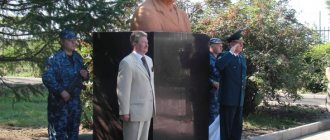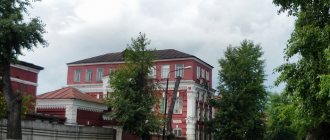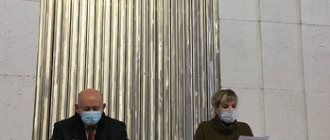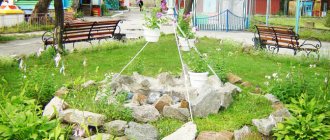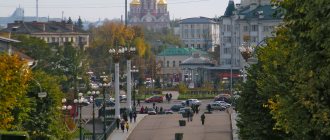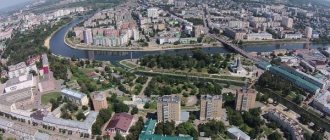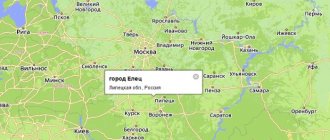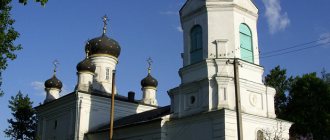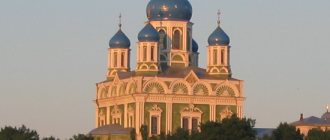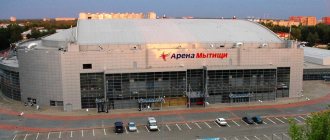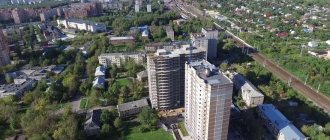Category: Sights
Founded in 1679 in the west of the Ishim Plain, today the city of Kurgan is an important business, economic, commercial, industrial and cultural center of the Urals, as well as the administrative center of the Kurgan region.
The city received its name in honor of the giant mound, also called Tsarev, which was located on its territory. However, in the 60s of the last century, the mound was demolished by order of local authorities, so now only the name remains of this mound. Fortunately, other interesting Kurgan sights have been preserved. The most interesting of them are related to the Decembrists and their stay in these places. There are many museums in this Ural city. Some of them are the only ones in the Urals and even in the country.
House-Museum of A. I. Kocheshev
Photography lovers will find it useful to visit one very unusual attraction of the city of Kurgan - the house-museum of the famous Kurgan businessman-photographer A.I. Kocheshev. It is located in the building of a former photographic studio, where the photographer himself once worked. Thanks to his talented works, tourists today can see what Kurgan looked like at the turn of the 19th and 20th centuries.
A huge number of officials and their families, military men, artel workers and peasants passed through Kocheshev’s photo studio. With the advent of Soviet power, the photographer, having lost his photo salon, moved with his family to Omsk, and his photographs are now stored in Kurgan museums and private albums of townspeople.
Location: Sovetskaya street - 92.
Art Museum
Museum workers quite rightly believe that the collection collected within the walls of the museum is unique. There are no similar exhibitions in the Kurgan region, numbering thousands of works by contemporary artists from different regions of Russia.
Visitors will see paintings by N. Dormidontov, O. Sokolova, A. Deineka, G. Shegal and many other authors. The museum often hosts creative meetings and exhibitions dedicated to memorable dates in the history of Kurgan and the region.
Address: st. Maxim Gorky, 129.
House-Museum of V. K. Kuchelbecker
In Kurgan, tourists can find a one-of-a-kind museum (there is nowhere else like it in the Russian Federation), dedicated to the life and work of the Russian Decembrist poet, a lyceum friend of the no less famous Russian writer A.S. Pushkin - V.K. Kuchelbecker.
After graduating from the Tsarskoye Selo Lyceum, Kuchelbecker was enrolled in the College of Foreign Affairs. For some time he worked as a teacher of Russian and Latin at the Main Pedagogical University, where his students were the future composer M. Glinka and the younger brother of A. S. Pushkin.
In 1817, he became a member of the secret society (pre-Decembrist organization) “Sacred Artel”. V. K. Kuchelbecker was a direct participant in the events on Senate Square; he participated in the assassination attempt on the brother of Nicholas I, Grand Duke Mikhail Pavlovich. After the discovery of the Decembrist uprising, he tried to flee abroad, but in Warsaw he was identified and returned back.
Kuchelbecker lived in the current museum from 1845 to 1846, together with his wife and two children. Today, tourists can see exhibitions with the poet’s personal belongings, his works and household items that he used.
Location: Kuibysheva street - 19.
City History Museum
Visit the merchant mansion that belonged to the merchant of the 1st guild S.I. Berezin. This stone urban-type estate is the only one in the vast Trans-Urals that has preserved an enclosed courtyard with a central house and outbuildings.
The 19th-century estate contains documents, photographs of city streets, and personal belongings that belonged to famous citizens. Visit the museum on the street. Kuibysheva. On the same street there is the house-museum of the Decembrist V.K. Kuchelbecker.
Address: st. Kuibysheva, 59.
Kurgan Aviation Museum
The opening of the Kurgan Aviation Museum took place in 1985. It has the status of a departmental museum of Kurgan Airport. Today this museum is the only one of its kind in the Urals and Siberia.
The museum's exposition is represented by 14 aircraft, which in turn are located on the paved territory of the Kurgan airport. Tourists, while visiting this museum, can see not only military aircraft, but also transport and passenger models.
Location: Gagarin street - 41B.
Kurgan Drama Theater
The State Drama Theater in Kurgan appeared in 1943; it was founded on the basis of a troupe that was part of the Shadrinsky City Theater.
Famous actors played in the performances of this theater: Yu. Yakovlev, V. Vasilyeva, V. Solomin, A. Myagkov and many others. Today, the Kurgan Drama Theater is a living creative mechanism that is constantly looking for new and interesting theatrical forms in the field of modern drama.
Location: Gogol street - 58.
Kurgan Puppet Theater "Gulliver"
The Kurgan Puppet Theater was included among the city's attractions, first of all, because it became one of the very first such Russian theaters. The decision to create it was made at the height of the war, in August of the war in 1943, and already in 1948 it was opened as part of the regional philharmonic society.
True, in the first years, due to the lack of their own stage, Kurgan artists had to work at traveling performances, and only in 1949 the premiere of the play “The Scarlet Flower” took place on the theater stage. Over the years of its work, the Gulliver troupe has received recognition in Russia, as well as in France.
Decembrists Museum
A museum dedicated to the Decembrists was opened in Kurgan in 1975, in the house where M. M. Naryshkin, colonel of the Tarutino Infantry Regiment, once lived with his wife. This military man was directly involved in the preparation of the uprising in 1825.
The Naryshkin family lived in a rich house. Today, tourists can see about 2,000 exhibits that can “tell” about the Decembrist movement and the life of the Decembrists who lived in exile in Kurgan.
Location: Klimova street - 80A.
House-Museum of the Decembrists in Kurgan
In the house of another Decembrist, M. M. Naryshkin, in which Mikhail Mikhailovich lived with his family in the 1830s, a branch of the Kurgan Regional Museum of Local Lore was opened in 1975.
After the restoration carried out here, this once richest house in the county town was completely restored. Nowadays, everything here corresponds to the period when the Decembrist family lived in the house, from the external appearance to the internal layout: the interiors of the master’s rooms, dining room, living room and library. The furniture of the premises, made of mahogany and Karelian birch, is also of interest. It is successfully complemented by bronze items, as well as porcelain and silverware. Today this house is one of the important Kurgan landmarks.
Monument to Pavel Vereshchagin
Tourists can see the monument to the hero of the cult Soviet film White Sun of the Desert, Pavel Vereshchagin, near the Kurgan customs building. The monument to the movie screen customs officer was erected in 2007. The authors of the creation of this attraction were Kurgan customs officers, and they also collected funds for its creation. The song performed by Vereshchagin in the film is the unofficial anthem of the entire Russian customs.
Location: Burova-Petrova street - 132.
Monument Zero Kilometer
Many cities around the world have a similar monument. Residents of Kurgan decided: a monument to the Zero Kilometer should appear in their hometown. A bronze figure of a postman was installed in 2012 at the main post office. Now all roads are measured from this place.
The author of the project is local artist Boris Orekhov. Tourists often take pictures next to the postman.
Address: st. Gogol.
Fire Tower
While in the city of Kurgan, tourists simply cannot pass by the fire tower, one of the main city symbols. It was built of wood in 1882 under the patronage of the city government.
Now the tower is usually called an architectural monument and at the same time a symbol of the fire department of the entire Kurgan region. Tourists at the top of the fire tower can see the chief fireman, or rather his dummy. There is a Gosha dummy installed there, on which firefighters practiced the skills of performing chest compressions and artificial respiration for quite a long time.
Location: Kuibysheva street - 62.
Monuments in the city of Kurgan
The monument to the famous hero of the beloved Soviet film “White Sun of the Desert” was installed where it should have been – opposite the customs building. Immortalized in granite, Pavel Vereshchagin has been here since 2007 thanks to the efforts of customs officers who spared no personal savings for him. Popular Russian customs officer Vereshchagin constantly reminds his colleagues that they must be decent and not give in to the temptation to take bribes.
Zero Kilometer is a kind of analogue of those monuments that are installed in some Russian settlements and around the world. A life-size postman cast in bronze stands on the zero kilometer of highways near the main post office. Its opening is timed to coincide with the historical date - the 333rd anniversary of the founding of the city of Kurgan.
Alexander Nevsky Cathedral
This Orthodox religious center is the main temple of Kurgan. The decision to build it was made in 1895 by Archbishop Agafangel of Tobolsk. He was the first person to contribute the first funds in the amount of 100 rubles for the construction of the cathedral. The main sponsor of the construction was the merchant D.I. Smolin, who donated 30,000 rubles.
Location: Volodarsky street - 42.
Cathedral Mosque
Muslim tourists can visit the cathedral mosque located in the city of Kurgan. It was built in the 2000s. The mosque is located in the city center.
There was previously a mosque on the territory of Kurgan, opened by Amfrozan Galiev in 1910. During the Soviet period, this religious institution was abolished, and a Tatar-Bashkir school was opened in its building.
Location: Sibirskaya street - 2.
Kurgan Cathedral of Alexander Nevsky
This cultural and architectural landmark of Kurgan is located in its very heart. Built at the beginning of the twentieth century with public money, the majestic Alexander Nevsky Cathedral remains the only one of the three Orthodox churches that existed in the city a hundred years ago. This ancient building miraculously survived the revolution, the war, and the years of stagnation. It was closed for a long period, then, starting in 1951, the exposition of the regional museum of local history was located here, and only in 1991 the temple was finally returned to the Kurgan believers.
